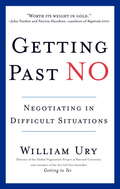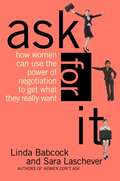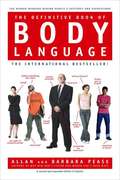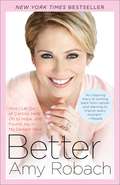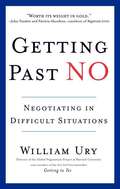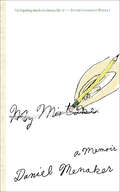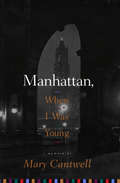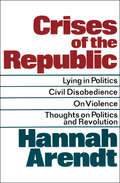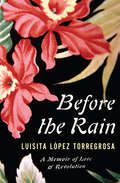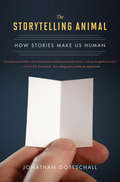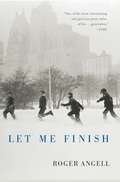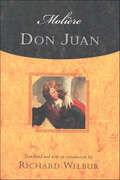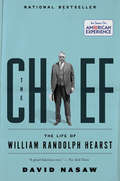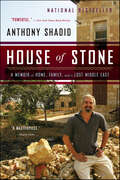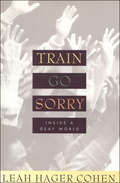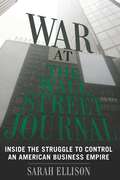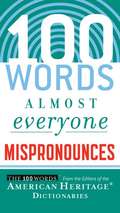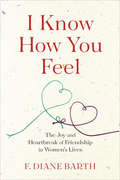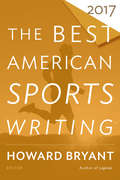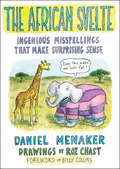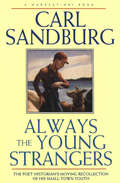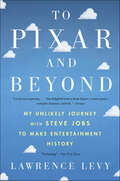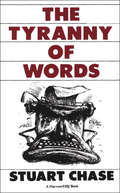- Table View
- List View
Getting Past No: Negotiating in Difficult Situations
by William UryWe all want to get to yes, but what happens when the other person keeps saying no? How can you negotiate successfully with a stubborn boss, an irate customer, or a deceitful coworker? In Getting Past No, William Ury of Harvard Law School's Program on Negotiation offers a proven breakthrough strategy for turning adversaries into negotiating partners. You'll learn how to: - STAY IN CONTROL UNDER PRESSURE - DEFUSE ANGER AND HOSTILITY - FIND OUT WHAT THE OTHER SIDE REALLY WANTS - COUNTER DIRTY TRICKS - USE POWER TO BRING THE OTHER SIDE BACK TO THE TABLE - REACH AGREEMENTS THAT SATISFY BOTH SIDES NEEDS. Getting Past No is the state-of-the-art book on negotiation for the twenty-first century. It will help you deal with tough times, tough people, and tough negotiations. You don t have to get mad or get even. Instead, you can get what you want!
Ask For It: How Women Can Use Negotiation to Get What They Really Want
by Linda Babcock Sara LascheverTo research this groundbreaking book, Linda Babcock and Sara Laschever spent several years talking to thousands of women about the high cost of failing to ask for what they want. Through that research, one thing became abundantly clear: feelings of self doubt - that voice inside your head that says 'Don't get pushy. Do you really deserve more?' - consistently prevent women from getting the things they desire most, whether it's a pay rise, a nicer office, or even just some help around the house. In Ask for It, Babcock and Laschever have developed a unique, cooperative approach to negotiating that begins before you ever get to a bargaining table, one that will help women realise their self-worth and identify their goals as well as maximise their bargaining power. It will help propel you to new places both professionally and personally - and open doors you thought were closed. Essential reading for women everywhere, Ask For It will help you recognise how much more you deserve - and show you how to get it.
Negotiation Genius
by Max H. Bazerman Deepak MalhotraFrom two leaders in executive education at Harvard Business School, here are the mental habits and proven strategies you need to achieve outstanding results in any negotiation. Whether you’ve “seen it all” or are just starting out,Negotiation Geniuswill dramatically improve your negotiating skills and confidence. Drawing on decades of behavioral research plus the experience of thousands of business clients, the authors take the mystery out of preparing for and executing negotiations—whether they invol...
The Definitive Book of Body Language
by Barbara Pease Allan PeaseAvailable for the first time in the United States, this international bestseller reveals the secrets of nonverbal communication to give you confidence and control in any face-to-face encounter - from making a great first impression and acing a job interview to finding the right partner. It is a scientific fact that people's gestures give away their true intentions. Yet most of us don't know how to read body language and don't realize how our own physical movements speak to others. Now the world's foremost experts on the subject share their techniques for reading body language signals to achieve success in every area of life. Drawing upon more than thirty years in the field, as well as cutting-edge research from evolutionary biology, psychology, and medical technologies that demonstrate what happens in the brain, the authors examine each component of body language and give you the basic vocabulary to read attitudes and emotions through behavior. Discover: How palms and handshakes are used to gain control; The most common gestures of liars; How the legs reveal what the mind wants to do; The most common male and female courtship gestures and signals; The secret signals of cigarettes, glasses, and makeup; The magic of smiles, including smiling advice for women; How to use nonverbal cues and signals to communicate more effectively and get the reactions you want. Filled with fascinating insights, humorous observations, and simple strategies that you can apply to any situation, this intriguing book will enrich your communication with and understanding of others as well as yourself.
Better
by Amy Robach"I have breast cancer." When Good Morning America anchor Amy Robach revealed her shocking diagnosis on live television in November 2013, the seasoned news reporter embarked on the most difficult and illuminating journey of her life. In this intimate memoir she retraces the twelve months following her announcement and speaks candidly, for the first time, about how her illness affected her family life and her marriage, tapped into her deepest fears and strengths, and transformed her in ways she never could have imagined. Only weeks earlier, in September 2013, ABC producers asked Robach to get an on-air mammogram to highlight Breast Cancer Awareness Month. Her first instinct was to say no--there was no history of cancer in her family, she was only forty years old, and she felt strange drawing attention to herself when she had no personal connection to the issue. (She'd been meaning to get her first mammogram that year but had conveniently "lost" the prescription.) Her colleague Robin Roberts, herself a cancer survivor, convinced her to do it with one simple sentence: "I can pretty much guarantee it will save a life." To Robach's surprise, the life she saved was her own: Tests revealed malignant tumors in her breast, and she immediately underwent a bilateral mastectomy, followed by six months of chemotherapy treatments. Better is more than a story of illness and recovery. Robach recounts the day she and her husband, Andrew Shue, got the terrible news; the difficulty of telling her two young daughters, and the challenges of carrying on with the everyday duties of parenting, nurturing a fledgling second marriage, and managing a public career. She lays bare the emotional toll of her experience and mines her past for the significant moments that gave her the resilience to face each day. And she describes the incredible support network that lifted her when she hit bottom. With honesty, humility, and humor, Robach connects deeply with women just like her who have struggled with any kind of sudden adversity. More important, she shares valuable wisdom about the power of the human spirit to endure the worst--and find the way to better.Advance praise for Better "By selflessly sharing the incredible story of her unexpected journey with breast cancer, Amy has given countless others hope. Better is the perfect title for her beautiful book. Sitting next to her every morning at GMA, I'm blessed to experience how my dear colleague and friend makes everything and everyone better."--Robin Roberts, co-anchor of Good Morning America "Amy is tough as nails and tenderhearted. The perfect combination, no? I have loved her for years, but never more than when I watched her beat cancer with such strength and grace. Her book is full of hope and healing--for Amy, and for all of us."--Hoda Kotb, co-host of Today "In Better, Amy Robach deftly brings us to the brink and back, showing us how, in life's most wicked rapids, we can rise above our fear and find safe passage."--Kelly Corrigan, author of Glitter and Glue "Amy Robach describes her experience with cancer in a way that incorporates the medical, emotional, personal, professional, maternal, and romantic aspects of life. You will laugh, cry, and learn."--Jennifer Ashton, M.D., ob-gyn, ABC News senior medical contributor and co-host of The DoctorsFrom the Hardcover edition.
Getting Past No: Negotiating Your Way from Confrontation to Cooperation
by William UryBook discusses negotiation skills in a user friendly way. Applies to multiple disciplines and personal issues.
A Sliver of Light: Three Americans Imprisoned in Iran
by Sarah Shourd Joshua Fattal Shane Bauer"A Sliver of Light weaves a spellbinding tale of hard-won survival at the intersection of courage and love -- the love of friends struggling to support one another in wretched circumstances, the unyielding bedrock of mothers' love for their long-lost children, and the fiercely tested love of three people for the family of humankind. It is a triumph of writing born of a triumph of being." -- Andrew Solomon, author of Far from the Tree and The Noonday Demon In summer 2009, Shane Bauer, Josh Fattal, and Sarah Shourd were hiking in the mountains of Iraqi Kurdistan when they unknowingly crossed into Iran and were captured by a border patrol. Wrongly accused of espionage, the three Americans ultimately found themselves in Tehran's infamous Evin Prison, where activists and protesters from the Green Movement were still being confined and tortured. Cut off from the world and trapped in a legal black hole, Bauer, Fattal, and Shourd discovered that pooling their strength of will and relying on one another was the only way they could survive. In A Sliver of Light, the three finally tell their side of the story. They offer a rare glimpse inside Iran at a time when understanding this fractured state has never been more important. But beyond that, this memoir is a profoundly humane account of defiance, hope, and the elemental power of friendship. "Riveting and necessary and illuminating in countless unexpected ways. The hikers have pulled off the almost impossible task of making from their hellish experience something of beauty and grace." -- Dave Eggers "A Sliver of Light is the record of a human rights triumph, a moving memoir by three individuals who found the strength to survive." -- San Jose Mercury News
My Mistake: A Memoir
by Daniel MenakerA former New Yorker editor and book publisher shares a &“ruefully funny insider&’s tour of the publishing world&” in this delightful memoir (Vogue.com). A New York Times Book Review Editors&’ Choice Daniel Menaker started as a fact checker at The New Yorker in 1969. With luck, hard work, and the support of William Maxwell, he was eventually promoted to editor. Never beloved by the magazine&’s legendary editor William Shawn, he was advised early on to find a position elsewhere; he stayed for another twenty-four years. Now Menaker offers an insightful and intimate account of that wonderfully strange place—as well as the publishing world at large and his own life—in this &“tender, smart, and witty&” memoir (Real Simple).My Mistake is a moving, thoughtful meditation on years well lived, well read, and well spent. Full of mistakes, perhaps. But full of effort, full of accomplishment, full of life.&“Energetic and exhilarating . . . [Menaker&’s] clever, fast-paced prose makes you stop and think and wonder.&” —New York Times Book Review
Manhattan, When I Was Young: A Memoir
by Mary CantwellA &“wonderful memoir&” of a woman&’s life as a fashion-magazine writer in 1950s and &’60s New York (Publishers Weekly). Mary Cantwell arrived in Manhattan one summer in the early 1950s with eighty dollars, a portable typewriter, a wardrobe of unsuitable clothes, a copy of The Poems of Gerard Manley Hopkins, a boyfriend she was worried might be involved with the Communists, and no idea how to live on her own. She moved to the Village because she had heard of it, and worked at Mademoiselle because that was where the employment agency sent her. In this evocative and unflinching book, Cantwell recalls the city she knew back then by revisiting five apartments in which she lived. Her memoir vividly recreates both a particular golden era in New York City and the sometimes painful, sometimes exhilarating process of forging a self.
Crises of the Republic: Lying in Politics, Civil Disobedience, On Violence, Thoughts on Politics and Revolution (Pelican Ser.)
by Hannah ArendtFour thought-provoking political essays by the author of The Origins of Totalitarianism. Taking an in-depth look at the tumult of the 1960s and &’70s, one of the great political philosophers of our era examines how these crises challenged the American form of government. &“Lying in Politics&” is a penetrating analysis of the Pentagon Papers that deals with the role of image-making and public relations. &“Civil Disobedience&” examines various opposition movements, from the Freedom Riders to the war resisters to the segregationists. And in two additional essays, Hannah Arendt delves into issues of revolution and violence. Wise and insightful, these pieces offer historical perspective on problems and controversies that still plague the United States in the twenty-first century.
Before the Rain: A Memoir Of Love And Revolution
by Luisita Lopez TorregrosaIn a voice haunting and filled with longing, Before the Rain tells the story of love unexpected, its fragile bounds and subtle perils. As a newspaper editor in the '80s, Luisita Torregrosa lived her career. Enter Elizabeth, a striking, reserved, and elusive writer with whom Torregrosa falls deeply in love. Their story--irresistible romance, overlapping ambitions, and fragile union--unfolds as the narrative shifts to the Philippines and the fall of Ferdinand Marcos. There, on that beautiful, troubled island, the couple creates a world of their own, while covering political chaos and bloody upheavals. What was effortless abroad becomes less idyllic when they return to the United States, and their ending becomes as surprising and revealing as their beginning. Torregrosa captures the way love transforms those who experience it for an unforgettable, but often too brief, time. This book is distinguished not only by its strong, unique, and conflicted heroines, but also by Torregrosa's lyrical portrait of the Philippines and the even more exotic heart of intimacy.
The Storytelling Animal: How Stories Make Us Human
by Jonathan Gottschall&“Insightful...draws from disparate corners of history and science to celebrate our compulsion to storify everything around us.&”—The New York Times Book Review Humans live in landscapes of make-believe. We spin fantasies. We devour novels, films, and plays. Even sporting events and criminal trials unfold as narratives. Yet the world of story has remained an undiscovered and unmapped country. It&’s easy to say that humans are &“wired&” for story, but why? In this delightful, original book, Jonathan Gottschall offers the first unified theory of storytelling. He argues that stories help us navigate life&’s complex social problems—just as flight simulators prepare pilots for difficult situations. Storytelling has evolved, like other behaviors, to ensure our survival. Drawing on the latest research in neuroscience, psychology, and evolutionary biology, Gottschall tells us what it means to be a storytelling animal. Did you know that the more absorbed you are in a story, the more it changes your behavior? That all children act out the same kinds of stories, whether they grow up in a slum or a suburb? That people who read more fiction are more empathetic? Of course, our story instinct has a darker side. It makes us vulnerable to conspiracy theories, advertisements, and narratives about ourselves that are more &“truthy&” than true. National myths can also be terribly dangerous: Hitler&’s ambitions were partly fueled by a story. But as Gottschall shows, stories can also powerfully change the world for the better. We know we are master shapers of story. The Storytelling Animal finally reveals how stories shape us. &“Lively.&”—San Francisco Chronicle &“Absorbing.&”—Minneapolis Star Tribune &“One of my favorite evolutionary psych writers—always insightful and witty.&”—Steven Pinker
Let Me Finish
by Roger AngellEssays from the award-winning New Yorker writer and author of This Old Man: &“Witty, worldly, deeply elegiac, and…heartbreaking.&”—The Boston Globe For more than fifty years, as both editor of and contributor for The New Yorker, Roger Angell has honed a reputation as a master of the autobiographic essay—sharp-witted, plucky, and at once nostalgic and unsentimental. In Let Me Finish, Angell reflects on a remarkable life (while admitting to not really remembering the essentials) and on its influences large and small—from growing up in Prohibition-era New York, to his boyhood romance with baseball, to crossing paths with such twentieth-century luminaries as Babe Ruth, John Updike, Joe DiMaggio, S.J. Perelman, and W. Somerset Maugham. He discusses his dread of Christmas, a revealing recurring dream, and his stepfather, E.B. White. He recalls glorious images from the movies he saw as a child (for which Angell has a nearly encyclopedic memory), the sheer bliss of sailing off the coast of Maine, and the even greater pleasure of heading home to the perfect 6 p.m. vodka martini. Personal, reflective, funny, delightfully random, and disarming, this is a unique collection of scenes from a life by the New York Times bestselling author of The Summer Game, &“one of the most entertaining and gracious prose stylists of his…generation&” (Time). &“A lovely book and an honest one…about loyalty and love, about work and play, about getting on with the cards that life deals you. It's also a genuinely grown-up book, a rare gem indeed in our pubescent age.&”—The Washington Post
Don Juan: Comedy in Five Acts, 1665 (Applause Bks. #Volume 3)
by MolièreDon Juan, the "Seducer of Seville," originated as a hero-villain of Spanish folk legend, is a famous lover and scoundrel who has made more than a thousand sexual conquests. One of Molière's best-known plays, Don Juan was written while Tartuffe was still banned on the stages of Paris, and shared much with the outlawed play. Modern directors transform Don Juan in every new era, as each director finds something new to highlight in this timeless classic. Richard Wilbur's flawless translation will be the standard for generations to come, as have his translations of Molière's other plays. Witty, urbane, and poetic in its prose, Don Juan is, most importantly, as funny now as it was for audiences when it was first presented.
The Chief: The Life of William Randolph Hearst
by David NasawThe definitive and &“utterly absorbing&” biography of America&’s first news media baron based on newly released private and business documents (Vanity Fair).William Randolph Hearst, known to his staff as the Chief, was a brilliant business strategist and a man of prodigious appetites. By the 1930s, he controlled the largest publishing empire in the United States, including twenty-eight newspapers, the Cosmopolitan Picture Studio, radio stations, and thirteen magazines. He quickly learned how to use this media stronghold to achieve unprecedented political power.The son of a gold miner, Hearst underwent a public metamorphosis from Harvard dropout to political kingmaker; from outspoken populist to opponent of the New Deal; and from citizen to congressman. In The Chief, David Nasaw presents an intimate portrait of the man famously characterized in the classic film Citizen Kane.With unprecedented access to Hearst&’s personal and business papers, Nasaw details Heart&’s relationship with his wife Millicent and his romance with Marion Davies; his interactions with Hitler, Mussolini, Churchill, and every American president from Grover Cleveland to Franklin Roosevelt; and his acquaintance with movie giants such as Louis B. Mayer, Jack Warner, and Irving Thalberg. An &“absorbing, sympathetic portrait of an American original,&” The Chief sheds light on the private life of a very public man (Chicago Tribune).
House of Stone: A Memoir of Home, Family, and a Lost Middle East
by Anthony Shadid“Wonderful . . . One of the finest memoirs I’ve read.” — Philip Caputo, Washington PostIn the summer of 2006, racing through Lebanon to report on the Israeli invasion, Anthony Shadid found himself in his family’s ancestral hometown of Marjayoun. There, he discovered his great-grandfather’s once magnificent estate in near ruins, devastated by war. One year later, Shadid returned to Marjayoun, not to chronicle the violence, but to rebuild in its wake.So begins the story of a battle-scarred home and a journalist’s wounded spirit, and of how reconstructing the one came to fortify the other. In this bittersweet and resonant memoir, Shadid creates a mosaic of past and present, tracing the house’s renewal alongside the history of his family’s flight from Lebanon and resettlement in America around the turn of the twentieth century. In the process, he memorializes a lost world and provides profound insights into a shifting Middle East. This paperback edition includes an afterword by the journalist Nada Bakri, Anthony Shadid’s wife, reflecting on his legacy.“A poignant dedication to family, to home, and to history . . . Breathtaking.” — San Francisco Chronicle“Entertaining, informative, and deeply moving . . . House of Stone will stand a long time, for those fortunate enough to read it.” — Telegraph (London)
Train Go Sorry: Inside a Deaf World
by Leah Hager CohenA &“remarkable and insightful&” look inside a New York City school for the deaf, blending memoir and history (The New York Times Book Review). Leah Hager Cohen is part of the hearing world, but grew up among the deaf community. Her Russian-born grandfather had been deaf—a fact hidden by his parents as they took him through Ellis Island—and her father served as superintendent at the Lexington School for the Deaf in Queens. Young Leah was in the minority, surrounded by deaf culture, and sometimes felt like she was missing the boat—or in the American Sign Language term, &“train go sorry.&” Here, the award-winning writer looks back on this experience and also explores a pivotal moment in deaf history, when scientific advances and cultural attitudes began to shift and collide—in a unique mix of journalistic reporting and personal memoir that is &“a must-read&” (Chicago Sun-Times). &“The history of the Lexington School for the Deaf, the oldest school of its kind in the nation, comes alive with Cohen&’s vivid descriptions of its students and administrators. The author, who grew up at the school, follows the real-life events of Sofia, a Russian immigrant, and James, a member of a poor family in the Bronx, as well as members of her own family both past and present who are intimately associated with the school. Cohen takes special pride in representing the views of the deaf community—which are sometimes strongly divided—in such issues as American Sign Language (ASL) vs. oralism, hearing aids vs. cochlear implants, and mainstreaming vs. special education. The author&’s lively narrative includes numerous conversations translated from ASL . . . a one-of-a-kind book.&” —Library Journal &“Throughout the book, Cohen focuses on two students whose Russian and African American roots exemplify the school&’s increasingly diverse population . . . beautifully written.&” —Booklist
War At The Wall Street Journal: Inside the Struggle To Control an American Business Empire
by Sarah EllisonA tale about big business, an imploding dynasty, a mogul at war, and a deal that epitomized an era of change While working at the Wall Street Journal, Sarah Ellison won praise for covering the $5 billion acquisition that transformed the pride of Dow Jones and the estimable but eccentric Bancroft family into the jewel of Rupert Murdoch’s kingdom. Here she expands that story, using her knowledge of the paper and its people to go deep inside the landmark transaction, as no outsider has or can, and also far beyond it, into the rocky transition when Murdoch’s crew tussled with old Journal hands and geared up for battle with the New York Times. With access to all the players, Ellison moves from newsrooms to estates and shows Murdoch, finally, for who he is—maneuvering, firing, undoing all that the Bancrofts had protected. Her superlative account transforms news of the deal into a timeless chronicle of American life and power.
100 Words Almost Everyone Mispronounces
by American Heritage Dictionary EditorsThis latest installment in the bestselling 100 Word series settles the score on 100 controversies and misconceptions about words with difficult or slippery pronunciations.
I Know How You Feel: The Joy and Heartbreak of Friendship in Women's Lives
by F. Diane Barth&“A compelling look at the ways in which women bond…essential reading for anyone trying to build—or maintain—a strong social circle.&”–BookPageDo I have enough friends? Why did my friendship end? What makes a good friendship work? These are questions that F. Diane Barth, a psychotherapist widely recognized for her expertise in women&’s relationships, fields all the time. In I Know How You Feel, she shares engaging stories from interviews with a lively and diverse cast of women, many of whom speak about feelings they haven&’t shared before. She explores how life changes affect women&’s friendships in subtle and not-so-subtle ways.Interweaving examples from a range of sources—from classic women&’s literature to chick flicks—she provides grounded advice on how to manage betrayal and rejection, how to deal with a narcissistic or bossy friend, what to do when your best friend and your family don&’t get along, how to let go of a friendship that has stopped working, and much more. This is a timely, empathetic guide for women in their twenties to their sixties and beyond.&“A lively and compassionate guide that defines what is meant by &‘friend&’ in the 21st century…engaging.&”–Library Journal &“A smart, perceptive, and complex study of women&’s friendships and how they enhance, color in, and shape our lives.&”—Susan Shapiro, author of Lighting Up
The Best American Sports Writing 2017
by Glenn Stout Howard Bryant“Excellent . . . A no-brainer pickup for the sports collection.” —Booklist For over twenty-five years, The Best American Sports Writing has built a solid reputation by showcasing the greatest sports journalism of the previous year, culled from hundreds of national, regional, and specialty print and digital publications. Each year, the series editor and guest editor curate a truly exceptional collection. The only shared traits among all these diverse styles, voices, and stories are the extraordinarily high caliber of writing and the pure passion they tap into that can only come from sports.
The African Svelte: Ingenious Misspellings That Make Surprising Sense
by Daniel Menaker&“For language lovers, this book, with all its verbal tangles and wit, is sure to, in its own words, &‘pass mustard&’&” (Poets & Writers). Inspired by Daniel Menaker&’s tenure at the New Yorker, this collection of comical, revelatory errors foraged from the wilds of everyday English comes with commentary by the author, illustrations by Roz Chast, and a foreword from Billy Collins. During his time at the renowned magazine, Menaker happened across a superb spelling mistake: &“The zebras were grazing on the African svelte.&” Fascinated by the idea of unintentionally meaningful spelling errors, he began to see that these gaffes—neither typos nor auto-corrects—are sometimes more interesting than their straight-laced counterparts. Through examples he has collected over the course of his decades-long career as an editor and writer, he brings us to a new understanding of language—how it&’s used, what it means, and what fun it can be. Illustrated by the inimitable Roz Chast, with a foreword by former poet laureate Billy Collins, The African Svelte offers thoughtful and intelligent exit Jesus. With both uniquely happy accidents and familiar fumbles like &“for all intensive purposes&” and &“doggy-dog world,&” readers delighted by language will find themselves turning the pages with baited breath to discover fresh howlers that have them laughing off their dairy airs.
Always the Young Strangers: The Poet Historians Moving Recollection of His Small Town Youth
by Carl SandburgThe Pulitzer Prize–winning poet and historian recalls his midwestern boyhood in this classic memoir. Born in a tiny cottage in Galesburg, Illinois, in 1878, Carl Sandburg grew with America. As a boy he left school at the age of thirteen to embark on a life of work—driving a milk wagon and serving as a hotel porter, a bricklayer, and a farm laborer before eventually finding his place in the world of literature. In Always the Young Strangers, Sandburg delivers a nostalgic view of small-town life around the turn of the twentieth century and an invaluable perspective on American history.
To Pixar and Beyond: My Unlikely Journey with Steve Jobs to Make Entertainment History
by Lawrence LevyAn insider's never-before-told story about how a struggling computer animation company called Pixar became one of the greatest entertainment organizations of all time. ¶“Part business book and part thriller—a tale that’s every bit as compelling as the ones Pixar tells in its blockbuster movies.”—Dan Lyons, best-selling author of Disrupted¶After he was dismissed from Apple in the early 1990s, Steve Jobs turned his attention to a little-known graphics company he owned called Pixar. One day, out of the blue, Jobs called Lawrence Levy, a Harvard-trained lawyer and executive to whom he had never spoken before. He hoped to persuade Levy to help him pull Pixar back from the brink of failure. This is the extraordinary story of what happened next: how Jobs and Levy concocted and pulled off a highly improbable plan that transformed Pixar into the Hollywood powerhouse it is today. Levy offers a masterful, firsthand account of how Pixar rose from humble beginnings, what it was like to work so closely with Jobs, and how Pixar’s story offers profound lessons that can apply to many aspects of our professional and personal lives. ¶“[A] delightful book about finance, creative genius, workplace harmony, and luck.”—Fortune ¶“Enchanting.”—The New York Times ¶“I love this book! I think it is brilliant.”—Ed Catmull, cofounder and president of Pixar Animation, president of Disney Animation, and coauthor of the bestseller Creativity Inc. ¶“A natural storyteller, Levy offers an inside look at the business and a fresh, sympathetic view of Jobs.”—Success Magazine¶An Amazon Best Book of 2016 in Business & Leadership • A top pick on Fortune’s Favorite Books of 2016 • A 2017 Axiom Business Book Award winner in Memoir/Biography ¶
The Tyranny of Words
by Stuart ChaseThe pioneering and still essential text on semantics, urging readers to improve human communication and understanding with precise, concrete language. In 1938, Stuart Chase revolutionized the study of semantics with his classic text, The Tyranny of Words. Decades later, this eminently useful analysis of the way we use words continues to resonate. A contemporary of the economist Thorstein Veblen and the author Upton Sinclair, Chase was a social theorist and writer who despised the imprecision of contemporary communication. Wide-ranging and erudite, this iconic volume was one of the first to condemn the overuse of abstract words and to exhort language users to employ words that make their ideas accurate, complete, and readily understood. &“[A] thoroughly scholarly study of the science of the meaning of words.&” —Kirkus Reviews &“When thinking about words, I think about Stuart Chase&’s The Tyranny of Words. It is one of those books that never lose its message.&” —CounterPunch
